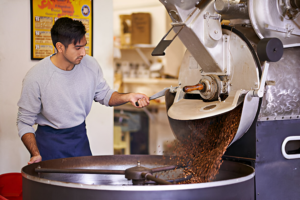
Indian weddings are a celebration of love, culture, rituals, and commitment, and can also be an expression of the couple’s religious beliefs. A Hindu marriage ceremony is one such Indian wedding, which is something you wouldn’t want to miss. You must get in touch with the best matrimonial services in India, in case you are looking for a Punjabi Matrimony.
If you’re invited as a guest or are attending the wedding as a member of the wedding party, or as the bride or groom’s friend. Or are just merely curious about the various rituals and customs, here are a few of the wedding rituals and traditions you should know about:
1. Determining the muhurta for the wedding
An auspicious time known as muhurta is fixed for the event, before the wedding is to be held. The astrologists calculate the position of planets and stars to calculate the perfect date and time for the divine union of the couple, using the bride and groom’s dates of birth. During the ceremony, the gotra of both the bride and the groom are announced out loud.
A gotra is the ancestral lineage of the family, or the ancestor’s original clan, going back to the previous male descendants of the family. The gotra has nothing to do with religion or castes. According to traditional Hindu marriage laws, as said in the Manu Smriti, marriages should not take place within the same clans.
2. The pre-wedding celebrations, or the sangeet
Before the actual wedding takes place, there’s a small pre-party called the sangeet, where the bride and the groom’s close family and friends gather together to sing, dance, and revel in the celebration of the upcoming union. The bride’s family usually sings a traditional folk song to welcome the groom’s family.
3. The bride’s hands and feet are adorned with henna during a Mehendi ceremony
During the Mehendi ceremony, intricate designs are made on the bride’s hands and feet using henna dye. As the Mehendi application can take hours, the Mehendi ceremony usually takes place the day before the day of the marriage.
4. The wedding ceremony takes place in mandap
The wedding mandap is a structure that is constructed to conduct the Hindu marriage ceremony. It may be built on an elevated platform, and is lavishly decorated with flowers, greenery, fabric and crystals.
5. The Holy Fire at the center of the mandap
A fire is kindled in the centre of the mandap or wedding altar. A Hindu marriage is a sacramental ritual and not a contract. A fire is kept as a witness and offerings are made, to signify the sanctity of the ceremony.
6. The couple exchanges garlands of flowers
The bride and groom exchange floral garlands in this part of the tradition. This expresses the couple’s desire to marry each other. It is the equivalent of the western ring ceremony.
7. The bride father pours water through the bride’s hand during Kanyadaan
Kanyadaan is the moment the father gives the bride away. The father of the bride places his daughter’s hands into the groom’s hands. It is during the Hindu marriage ceremony as a gesture of giving her away. “
8. The bride and groom’s circle the fire and their garments are tied together
The saptapadi is a very important ritual in North Indian Hindu weddings, during which the groom and bride have their garments tied together. In South India, the couple walk seven steps together to signify their union. The primary significance of saptapadi is to establish friendship, and companionship, which is the base of a successful Hindu marriage.
8. Red Sindoor is applied to the bride’s hair, signifying her status as a wife
Sindoor, a red-orange powder, is used to a parting of a woman’s hair, symbolizing her new status as a married woman. It is used to her hair during the marriage ceremony.
9. The Bride wears red clothing
The bride’s garments are usually red. In Indian culture, red symbolizes fertility and prosperity.
10. Hindu Wedding Rituals begin with a prayer to Ganesh, the Elephant headed-god
The ceremony starts with a prayer to the Hindu god Ganesh, the god of beginnings and good fortune, and the remover of obstacles. Prayers are offered so that Ganesh may pave the way for the couple’s successful married life.
11. During Raksha Bandhan, the cords are tied to the hands of the groom and bride
Marriage is an arduous stage in life, and hence, sacred cords are related to the sides of both the bride and groom to protect them from the ups and downs of life.
12. The groom ties a Necklace Called the Mangala Sutra on the bride’s neck
The groom ties a necklace of black and gold beads on the bride’s neck. And through this, the bride is said to receive blessings throughout her married life.
Looking for Punjabi Matrimony? Get in touch with the best matrimonial services in India.








